Bastei is the famous rock formation in Saxon Switzerland National Park in Germany. The highlight of the national park is the Bastei Bridge. This national park, straddling the Czech Republic and Germany, is a unique landscape of the Elbe Sandstone Mountains.
More than 100 million years ago, it lay at the bottom of a shallow sea. The gradual accumulation of sand and eroded debris by rivers formed a hefty sandstone slab, reaching a thickness of 600 meters. Over the course of millions of years, earth movements lifted the slab, giving rise to the stunning Elbe Sandstone Mountains.
Why is it called “Saxon Switzerland”?
You might find it puzzling – why the name Saxon Switzerland? Well, it’s located in Germany, not Switzerland. Let’s go back to the 18th century when two Swiss artists, Adrian Zingg and Anton Graff, were appointed by the Dresden Academy of Arts in 1766. As they looked east of Dresden, they encountered a table mountain range without a distinct summit.
The landscape struck a familiar chord with their hometown in Switzerland. However, to avoid confusion, they referred to this area in their correspondence as Saxon Switzerland. Before that, the Saxon part of the Elbe Sandstone Mountains was simply known as the Meissner Highlands.
Highlights of the day trip to Bastei
My fascination with Bastei was sparked some time ago when I saw a picture of the Bastei Bridge before dawn. The remote and charming view immediately piqued my interest. During my visit to Dresden, I seized the opportunity for a day trip to Bastei, a mere 40 kilometers away. The good news for budget-conscious travelers is that the entire national park area is free and accessible year-round. Let me share the highlights of my memorable day trip to Bastei:
- Bastei panoramic view platform
- The breathtaking views from the famous Bastei Bridge
- Neurathen Castle, the largest rock castle in Saxon Switzerland
- Felsenbühne (Open-Air Rock Theater)
- Panorama Restaurant with a view of the Königstein Fortress
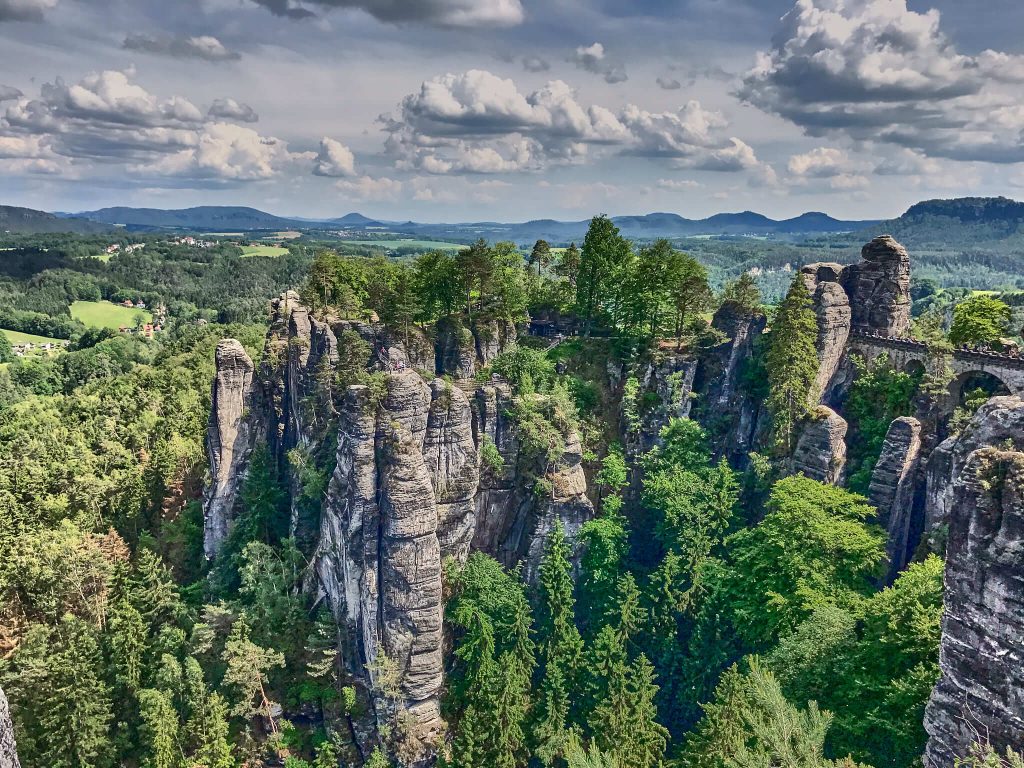
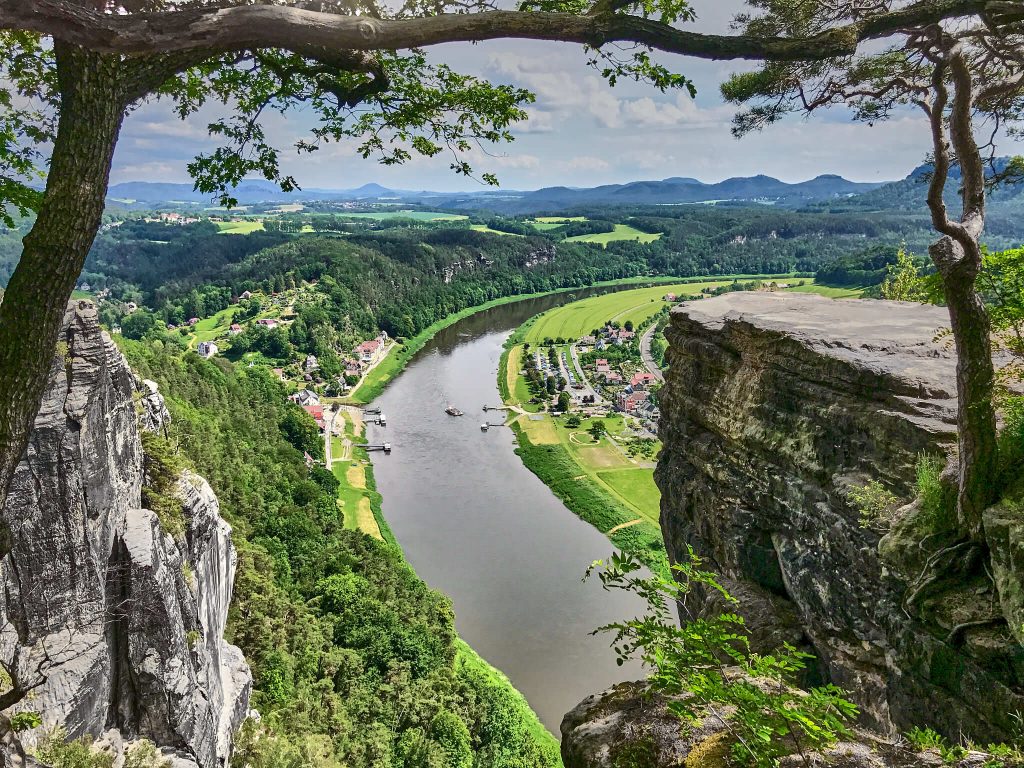
Bastei panoramic view platform
My first stop was the panoramic view platform, perched atop a colossal rock formation. Unfortunately, erosion has rendered the rock itself off-limits. However, from the side, I still enjoyed a breathtaking view of both the giant rock and the winding Elbe river. Capturing photos of this remarkable rock and the picturesque river was a happy moment, and the contrasting shapes made for stunning pictures even if you’re not well-versed in photography techniques.
The breathtaking views from the famous Bastei Bridge
The path leading to the Bastei Bridge is clearly sign-posted. As I followed the trail, I discovered vantage points offering diverse views of the Elbe River. Amidst the stunning scenery, I noticed several memorial inscriptions on the rocks. One inscription commemorates Herman Krone, a Saxon photographer born in Breslau, who captured the first landscape photograph in Saxony here in 1853. The picturesque landscape has been a muse for various artists, including Caspar David Friedrich, the renowned German romantic painter, who created the masterpiece “Rocks in the Elbe Sandstone Mountains.”
Originally constructed in 1824 as a wooden bridge, the Bastei Bridge was later replaced in 1851 with a sandstone structure. Stretching only 76.5 meters, the bridge connects the rock formations. While walking on the bridge may not provide the same thrill as admiring it from a distance, the Bastei Bridge serves as the gateway to the rock castle, Felsenburg Neurathen.
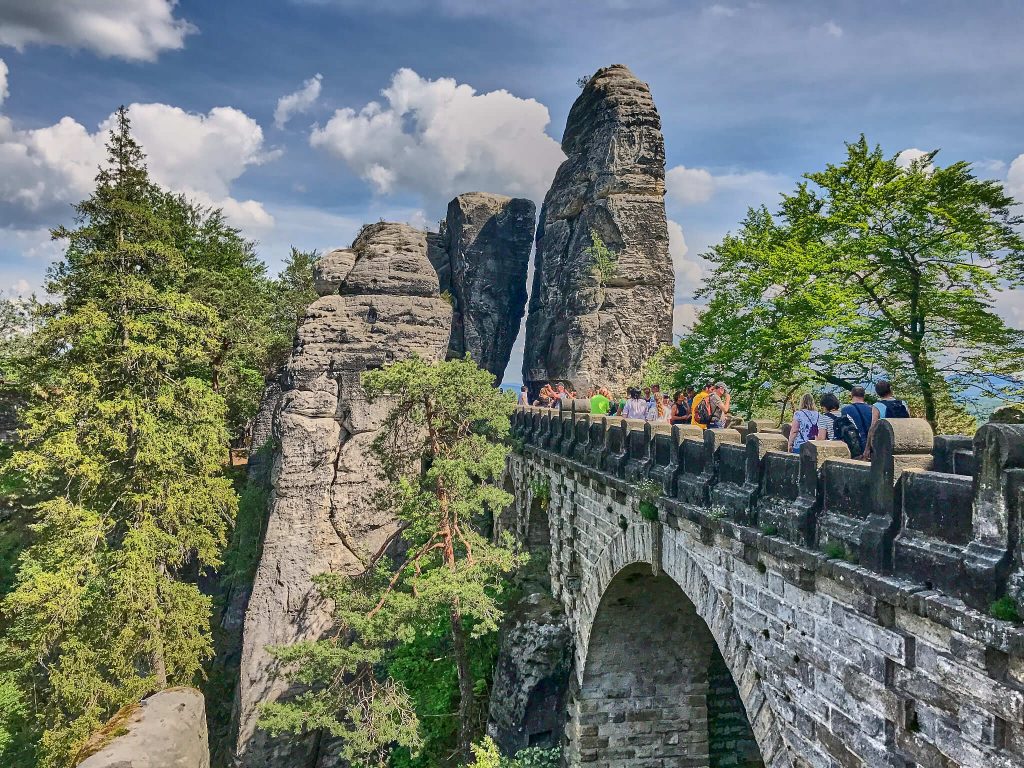
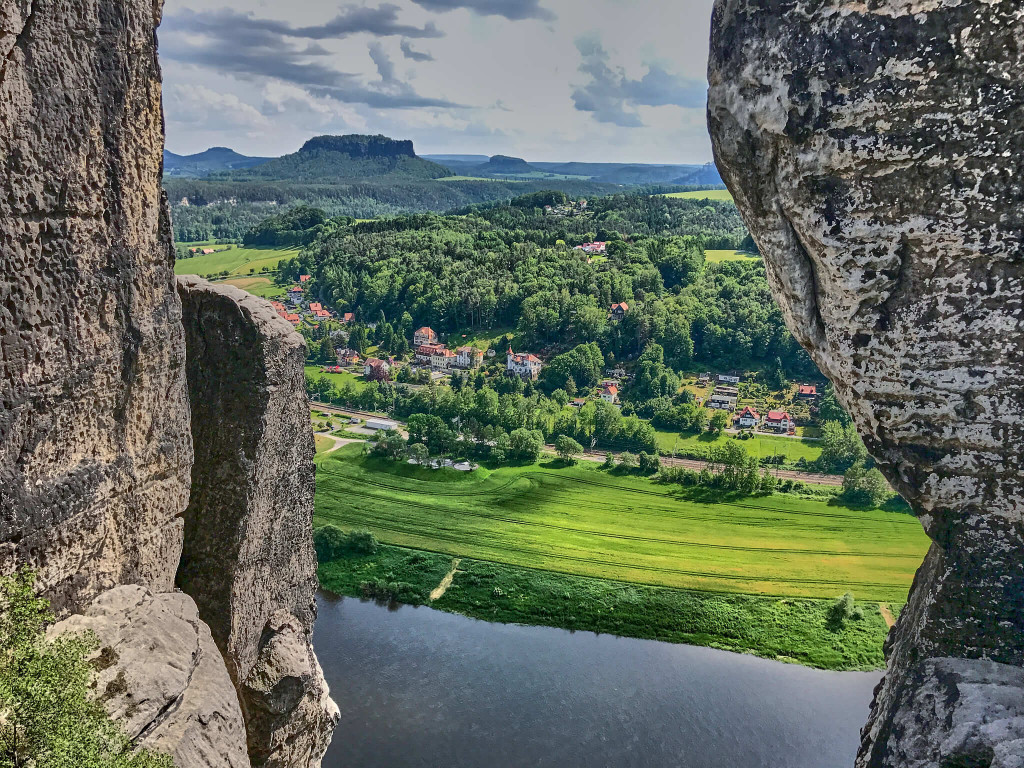
Neurathen Castle, the largest rock castle in Saxon Switzerland
The rock castle Neurathen is the ruin of a medieval rock castle in the Elbe Sandstone Mountains. It was the largest and the most awe-inspiring structure in Saxon-Bohemian Switzerland. I paid a small fee at the ticket booth to get into the castle.
Wandering through the well-preserved pathways, I followed the signs that guided me through the historical marvels within the castle grounds. With its origins tracing back to 1289, the castle witnessed the ownership of various Bohemian noble families before finally becoming the cherished property of the Saxon electors in 1426. The castle with a width of about 100 metres, featured a unique blend of structures carved into the rock and half-timbered buildings.
Today, remnants of the castle include the courtyard, cistern, passageways, and traces of rooms sculpted into the rock. Noteworthy among the attractions is the replica of a catapult, a giant siege weapon employed to defend the castle with stone balls. Some of these stone balls are thoughtfully displayed within the castle grounds.
One remarkable feature is the cistern, ingeniously carved directly into the rock. Rainwater, channeled through a guttering system, flowed into a covered basin. This strategic design maintained the cistern’s cleanliness, preventing the growth of algae. Within the clay-insulated double-layered stone wall, a wooden pipe equipped with a valve let the water to pass through a gravel pit filter, ensuring its purity for the castle’s inhabitants.
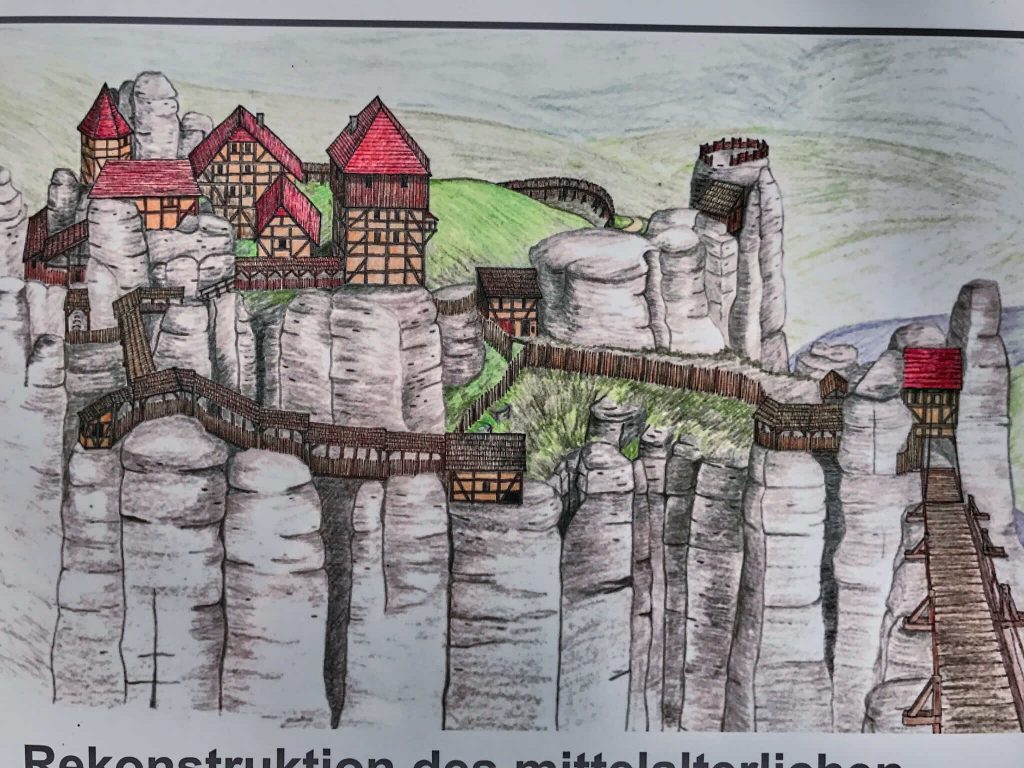
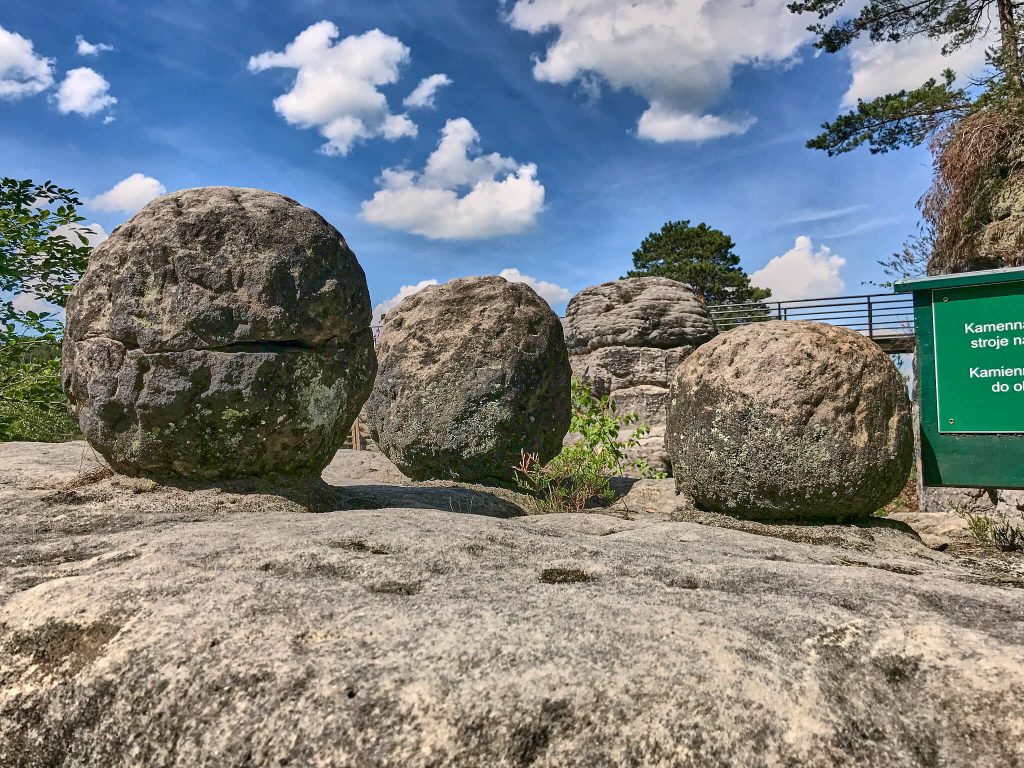
Felsenbühne (Open-Air Rock Theater)
Felsenbühne is an Open-Air Rock Theatre below the famous Bastei rocks and Neurathen Castle. It contains around 200 seats. Constructed in 1936, this cultural gem has been a focal point for Rathen community performances, offering a unique blend of plays and musical events against the dramatic backdrop of the rock castle. Throughout the months of May to September, the Landesbühnen Sachsen hosts an impressive lineup of up to 90 performances.
Excitingly, from September 2019 to April 2022, the Open-Air Rock Theatre is undergoing a modernization journey, marked by a substantial investment running into millions of euros. This revitalization aimed to enhance the visitor experience and preserve the charm of this natural theatre.
Panorama Restaurant with the view of the Königstein Fortress
After walking for a couple of hours, I found my way to the Berghotel Bastei’s restaurant. Much to my surprise, the panorama restaurant provided me a breathtaking sunset panorama overlooking the majestic Königstein Fortress.
The panorama restaurant offered food from fresh salads to tantalizing variations of poultry, fish, and game, the menu combined with a selection of fine Saxon wines or a freshly tapped Radeberger Pilsner, a quintessential regional beer.
As you dine, the atmosphere was further enriched by a well-appointed bar, a crackling fireplace, and inviting terraces that promise a haven of comfort for every guest.
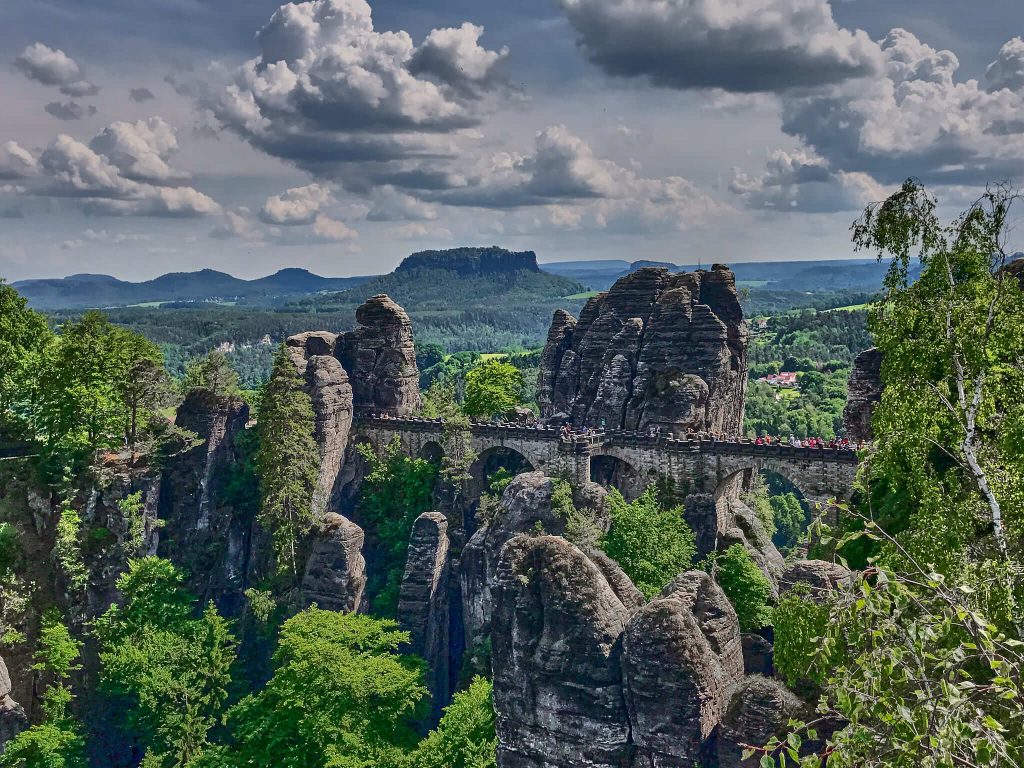
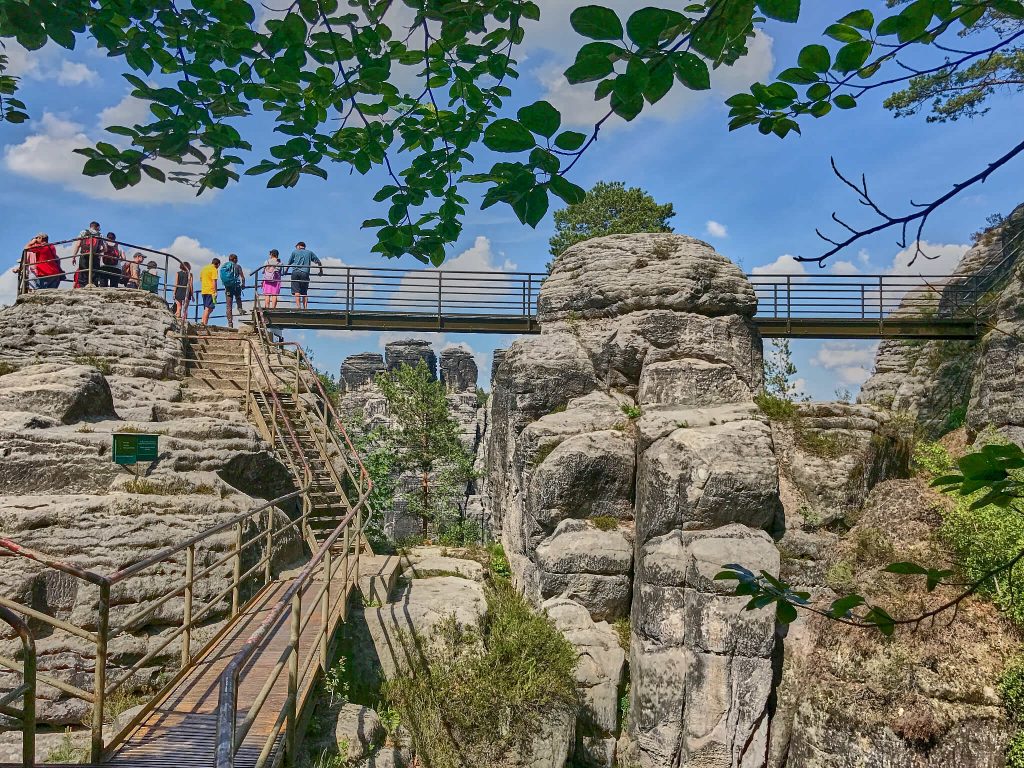
Travel tips for Bastei Natural Wonder
Hiking in the Saxon Switzerland national park
For those who yearn for outdoor adventures, the Elbe Sandstone Mountains Malerweg trail is one of Germany’s most scenic hiking routes, spanning a delightful 112 kilometres through the rocky terrain of the region. The most recommended trail is the Bastei-Hike from Wehlen via Bastei to Kurort Rathen. Covering approximately three hours, this trail not only treats hikers to breathtaking landscapes but also demands a bit of hiking prowess.
Where to stay
The Berghotel Bastei, just a short walk from the renowned Bastei, provides a perfect base for day-long hiking adventures. Start your mornings with a hearty breakfast in the restaurant. After a day of exploration, unwind in the sauna and spa, completing your experience of nature’s wonders from sunrise to sunset. Book your stay at this serene retreat through booking.com.
Suggested tours
How to get there
Hiking: A stunning trail from Wehlen via Bastei to Kurort Rathen, offering a journey through the picturesque landscapes of Saxon Switzerland..
By car: Head towards the renowned Bastei Bridge, approximately 30 km from Dresden. Note that finding parking close to Bastei can be challenging, but a suitable option is the P+R Bastei, located at the beginning of Basteistrasse, behind the petrol station. From there, you can either walk around 3.5 km to Bastei or take the shuttle bus for a small fee.
S-Bahn: Take S-Bahn (line S2) train from Dresden Central railway station to Pirna, followed by Bus 237 to Rathewalde P+R-Platz, Hohnstein. This P+R place serves as a convenient parking spot, offering a shuttle bus to Bastei.
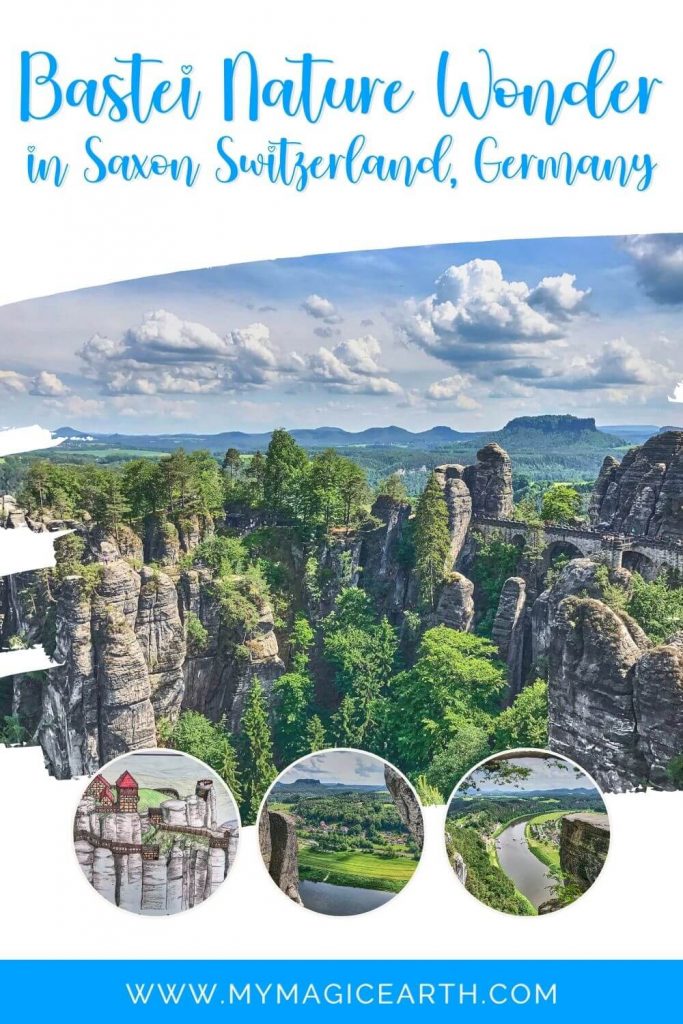
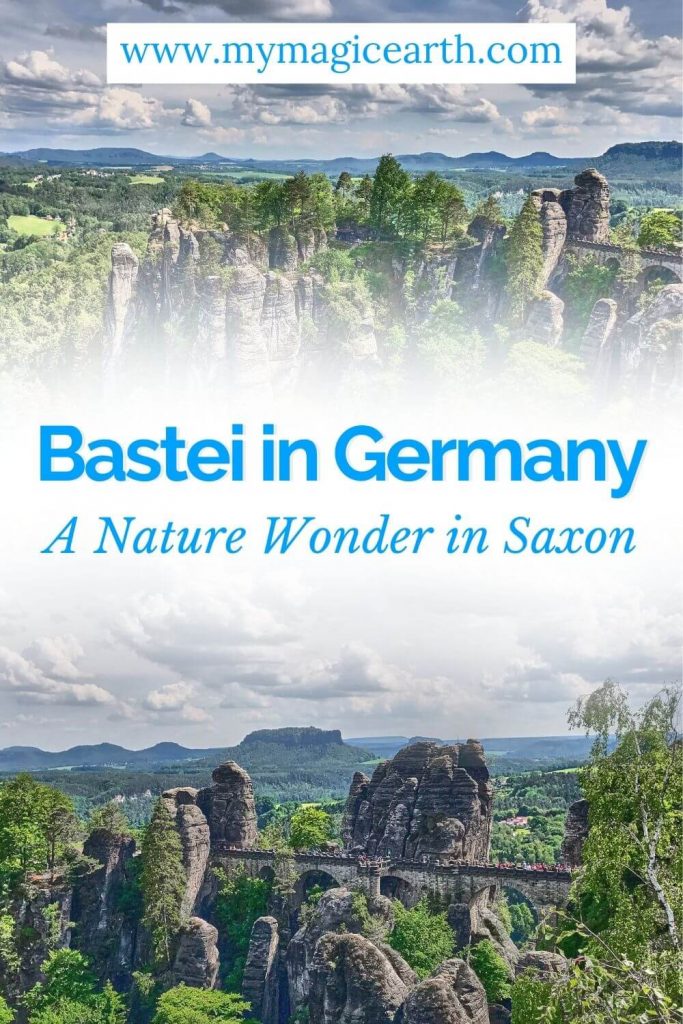
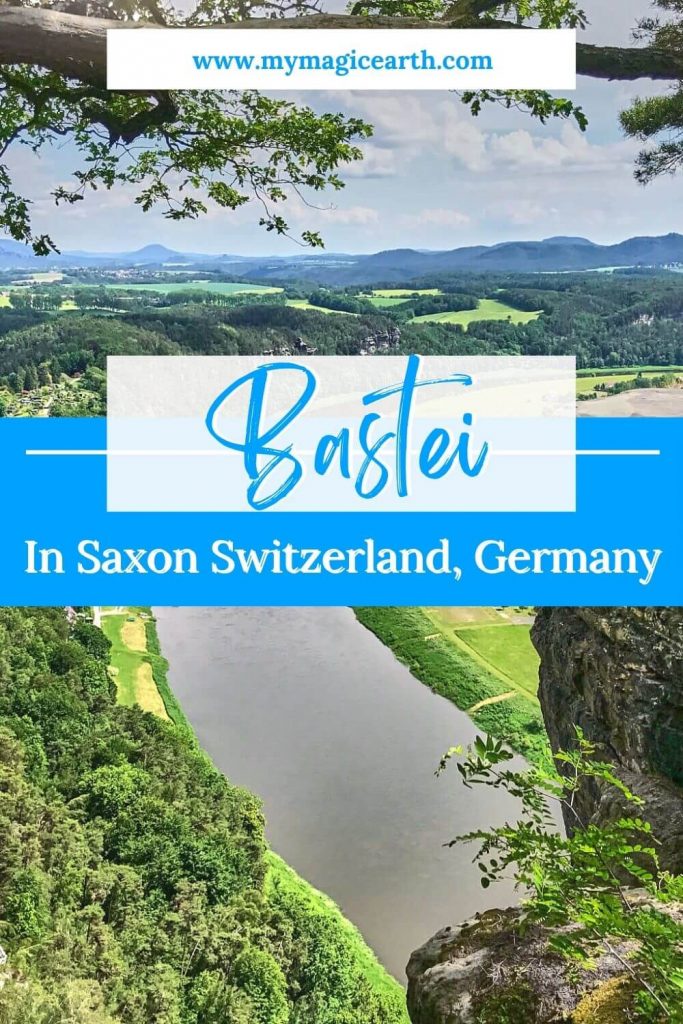

I’m glad you clarified why Switerzland was in the name because that did confuse me immensely. I would argue that the duo could definitely have thought of a better name to not confused future tourists! 😉 You certainly right in saying that the views from the bridge are breathtaking. I’m not surprised that some former ruler thought this site with the ideal location for a castle. You definitely can’t beat that view. I found the ruins that you visited fascinating and I’m itching to learn more!
Bastei looks so beautiful. The rock formations are so lovely. I was initially intrigued reading the name Switzerland but as I read through your post, it became clear why ‘Switzerland” figured in the name of the place. I am really intrigued looking at the boulders used by the giant catapult to protect the place.
Giant rock formation like Saxon Switzerland always makes me speechless! Imagine if you can dive deep into the ocean, and this is what it would be look like without water. And the views from the bridge and the platform are just breathtaking. The rocks framed your pictures naturally. Love it!!
Those rock formations look stunning!! The view from the Bastei Bridge is simply breathtaking. I would love to see the performances in the open-air theatre. The location as well as the Berghotel Bastei itself looks very beautiful – definitely a lovely place to stay in the midst of nature.
What an incredible rock formation and bridge too! I’ve never heard of this bridge before, which makes me think I need to return to Germany and explore it better! I also love the Panorama Restaurant; there’s nothing better than having a meal with a fantastic view!
The Bridge is incredible. The views from the bridge and surrounding area are spectacular. I have not visited this region but I will certainly plan to if I am close by. I am very impressed with the size of the stone balls used in the catapult. The Berghotel Bastei is definitely the place I would consider staying when visiting this region.
Wow this place is amazing and definitely a geographical marvel! For a moment, I was confused on whether this post was on Switzerland or Germany until you clarified on the origin of the name. I’d love to visit the park one day, and will definitely include the river and the castle in my visit. Thanks for the detailed post. 🙂
Hi Eunice,
Thanks for the comments. Yes, the park is quite big and there are many hiking routes at all levels. Many tourists go there for a hiking trip. We are also thinking of go there again soon.
Mijia
The rock formations around the Bastei Bridge are incredible! I would love to see it one day. It’s very nice that the park is free as well, definitely not always the case with beautiful places like this. Pinned!
Wooow, those rock formations are impressive! They must have been even more amazing when there was a castle too!
I’d love to stay in Bastei and hike around this beautiful area!
Lovely post and covers the region so well. The pictures are very pretty too